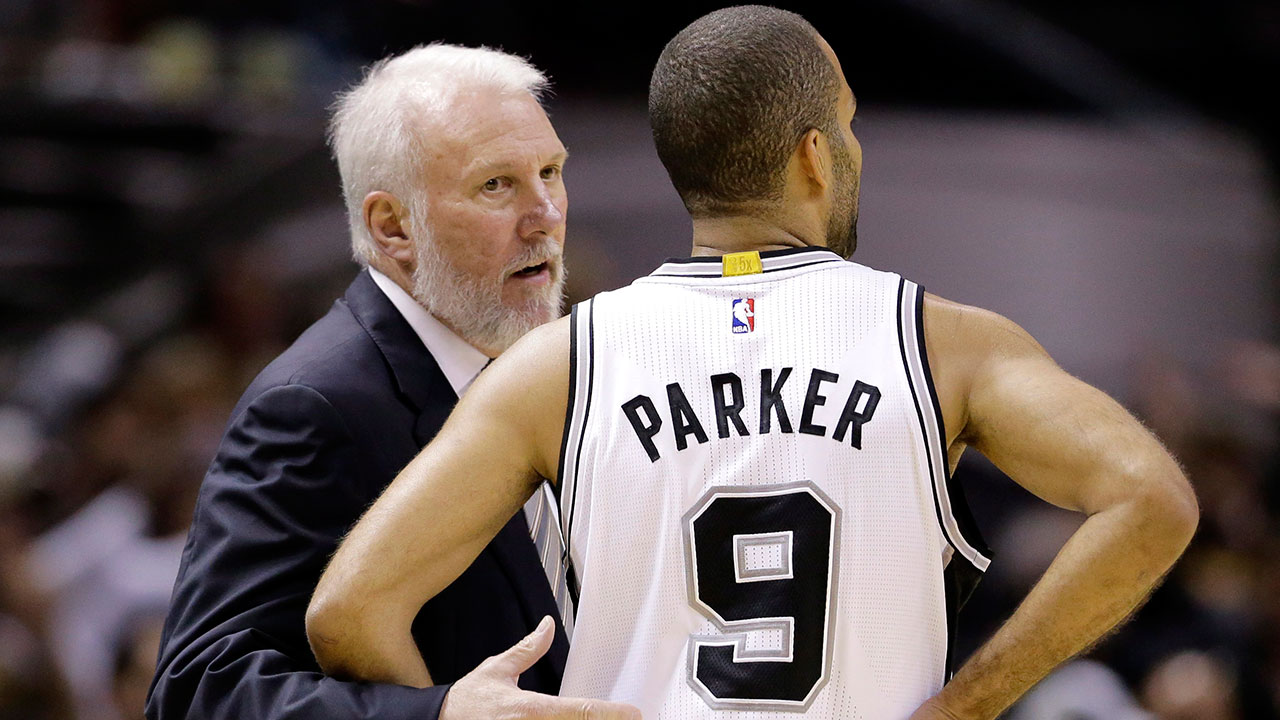The phrase “pop culture” has a unique meaning in San Antonio, Texas.
Following Monday night’s win over the Indiana Pacers, Gregg Popovich became the ninth coach to gain his 1000th NBA win. The Spurs’ bench boss reached the mark faster than any coach other than Phil Jackson and Pat Riley, and only Jerry Sloan has more wins with a single franchise.
In his 19 season at the helm in San Antonio, Popovich has managed the second-highest winning percentage of all the longest tenured bench bosses in the four major North American pro sports (.684, in case you were wondering). He sits ahead of Mike Scioscia (.543 with MLB’s Los Angeles Angels of Anaheim) and Mike Babcock (.656 with the Detroit Red Wings), as well as past coaching greats like George Halas, Don Shula and Red Auerbach.
So, what’s the secret to Pop’s winning culture?
Simple. In an era of jump-and-jam showmanship, Popovich’s teams play together. It’s a formula that has seen them capture five NBA titles since Pop took the helm in 1996—a number that easily could’ve been six if not for a single offensive rebound by Chris Bosh—and remain a perennial contender in a league that has undergone massive changes in the past two decades. The sheer longevity of Popovich’s success with the Spurs is astounding, and speaks to his remarkable ability to continually communicate his philosophy to ever-changing rosters.
“To get that [team concept] across to today’s players as easily as he has done is remarkable—and you have to give him credit,” says Mike Brown, a former Spurs assistant and head coach with the Cavaliers and Lakers. “He is a frontrunner in a lot of different aspects of the game of basketball, especially on our level—not only offensively but defensively, too.”
Key to getting his message across is Popovich’s relationship with his players. All of his players will tell you that beneath his gruff exterior, Pop truly cares for them as men. He earns their respect to the point that highly talented players allow themselves to be molded to better fit Popovich’s principled—and at times unrelenting—system. Stars like Avery Johnson, David Robinson and, especially, Tim Duncan have all been key pieces in Popovich’s run as a coach.
“Guys see the passion that he has whenever he is talking about something or implementing something. And after they see the passion, he gets players to buy in,” states Brown. “He had the right type of players in his program. They bought into what he was saying or preaching and it has trickled down.”
Landing “the right type of players” is no accident. Like some collegiate programs, the Spurs only recruit certain types of players—men of solid character who can be shaped into excellent and unselfish basketball players. True, you need talent, but you also need guys who are willing to play a certain way. Popovich has done a better job finding those types of players than any other NBA coach.
The 2014-15 Spurs roster features a handful of castoffs from other teams that have found a fit in the San Antonio system. Yes, there’s star talent leading them in the persons of Duncan, Tony Parker and Manu Ginobili, but remember, the Argentinian was drafted 57th overall—not exactly the lineage of a LeBron James or Kevin Durant. Boris Diaw was released by Charlotte—at the time, one of the worst teams in the league—and became a key piece. Patty Mills and Danny Green were second-round picks of Portland and Cleveland, respectively. Neither made an impact with the team that drafted him; both are currently mainstays in the Alamo City. Was Aron Baynes on anyone’s radar before donning the grey, black and white? And Kawhi Leonard came back in a trade that sent George Hill to the Pacers. Tell me, which one of those players was a Finals MVP at 22 years of age?
“You have to recruit the type of player that will fit your system. You can’t just go out and get a talented individual,” stresses Brown. “If that guy is not willing to adjust to your group, it can throw a monkey wrench into your whole system.”
Sticking to his principles and building team-first units the right way—that’s the secret behind 1000 wins.
Take a good look folks, you’re watching a once-in-a-generation coach at work.


